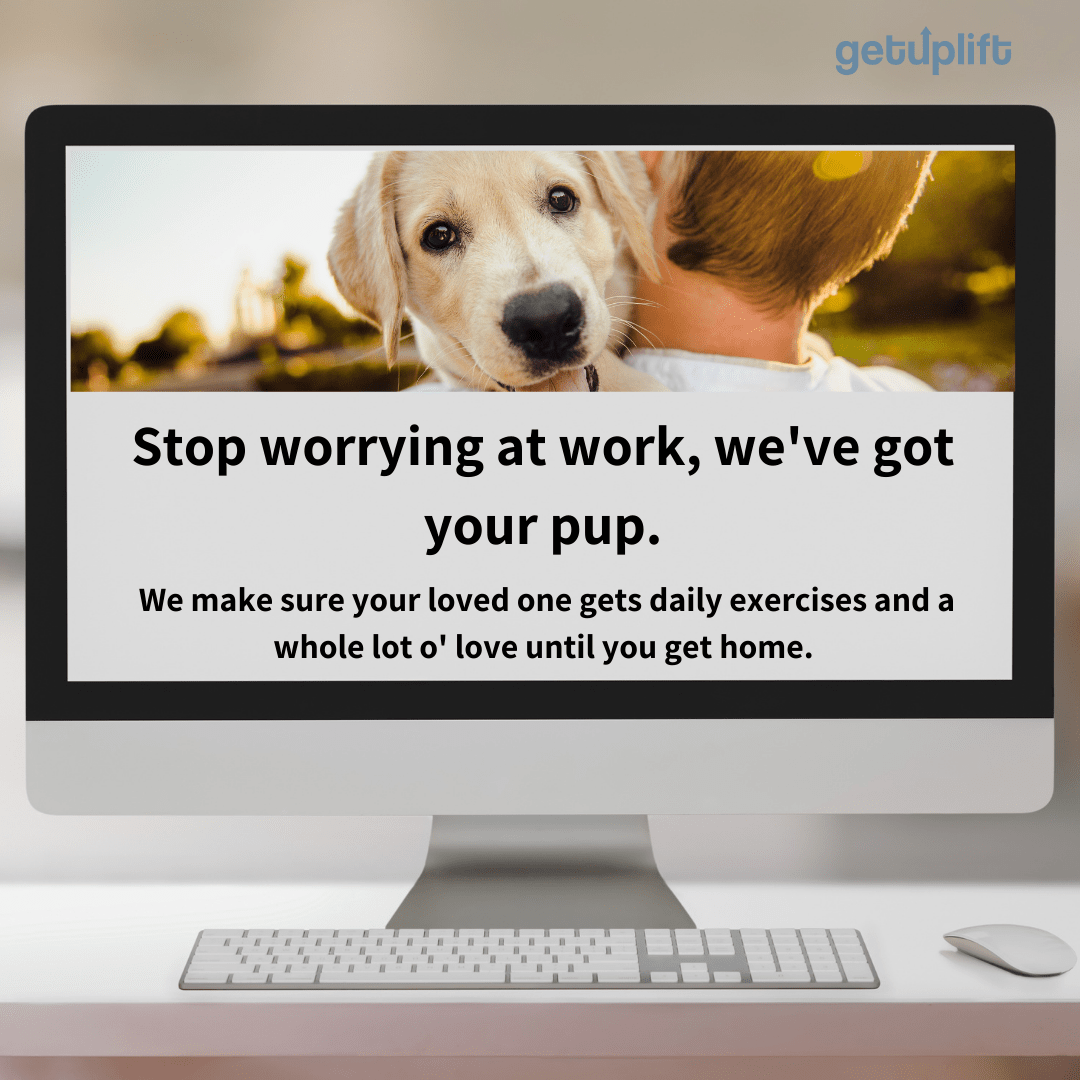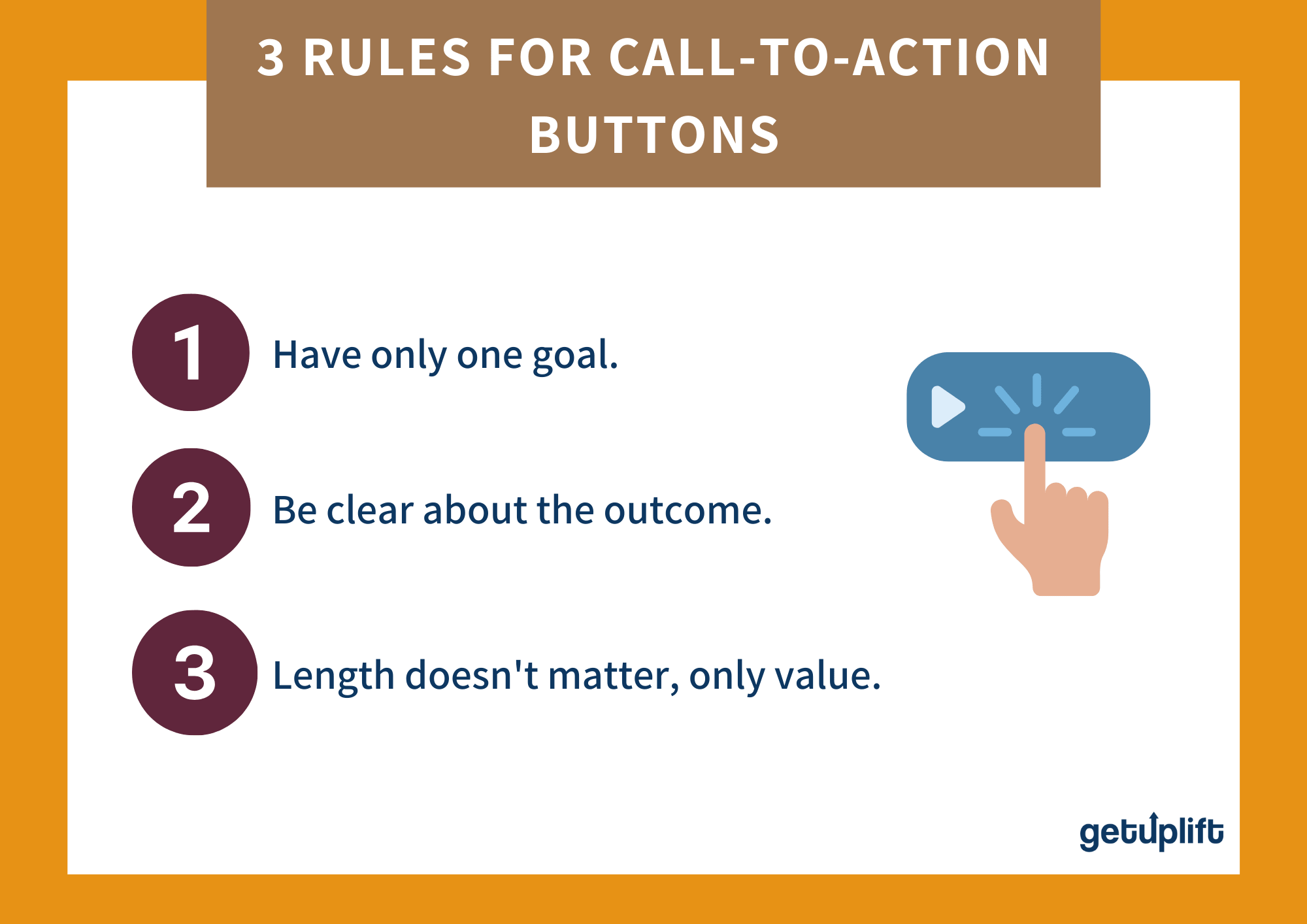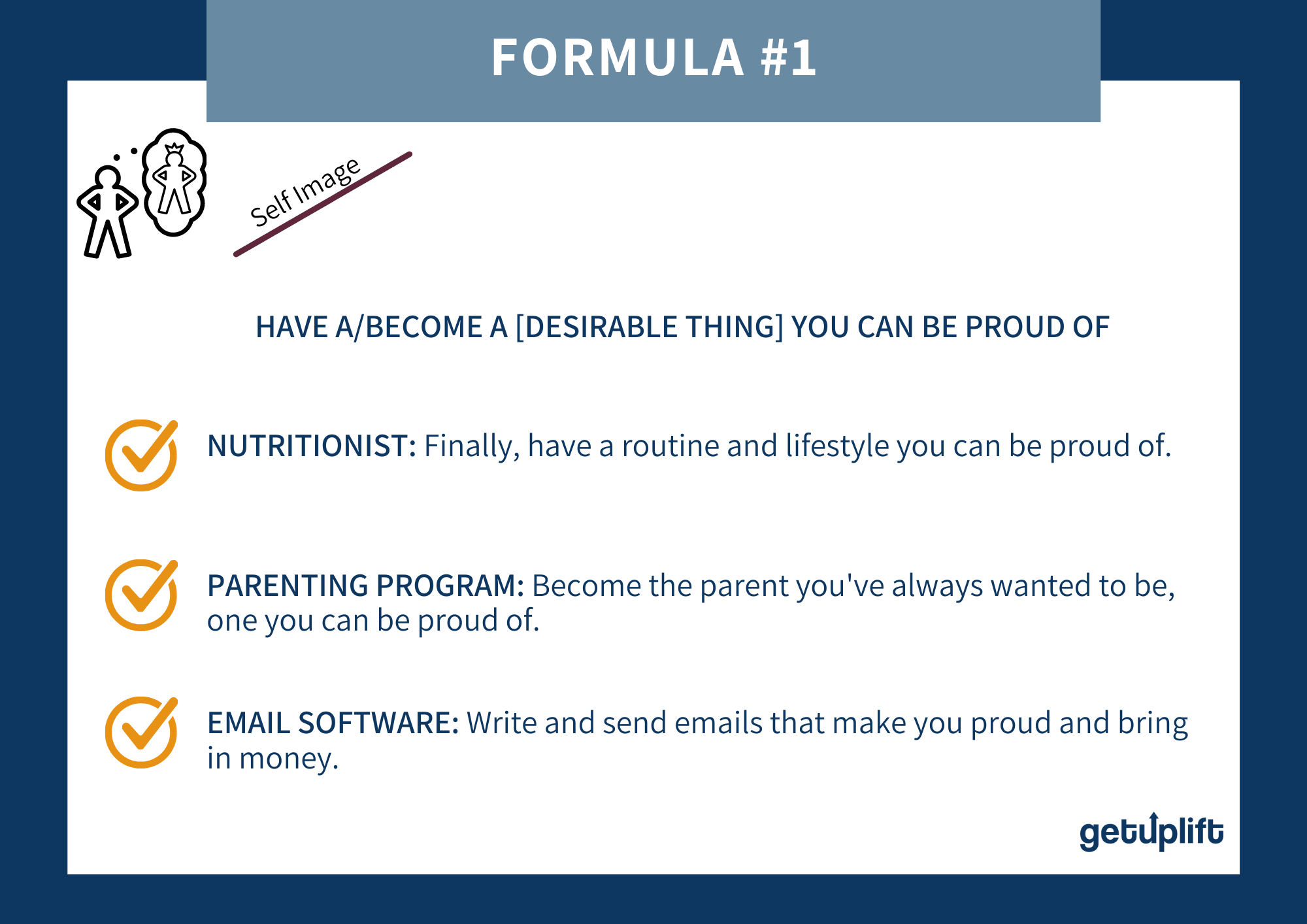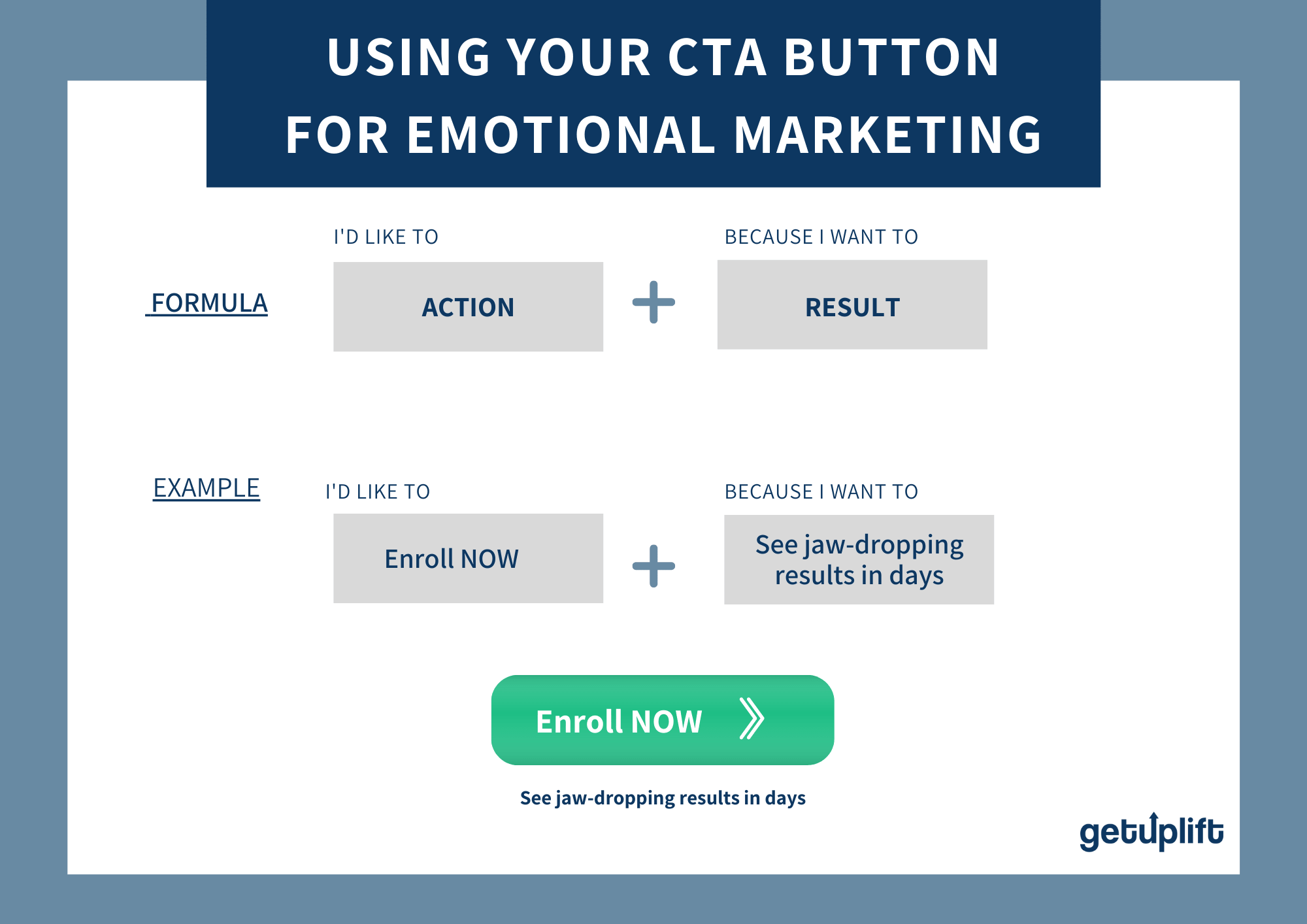What really drives the way your prospects and customers make decisions?
While we may like to think of ourselves as rational, logical, data-driven people who make informed choices, there’s something else going on beneath the surface.
Something that influences everything we do and affects what we buy and who we buy it from.
Just think about the number of choices you have to make every day.
What to eat. What to wear. Which side of the bed to get up from.
And those are just the first of hundreds of choices you’ll make today.
Imagine how much brain power you’d need if you had to actively think your way through every single option.
That’s why our brains have shortcuts that help us decide fast.
And these shortcuts – or cognitive biases – influence everything you do.
From what car you drive and what you eat for breakfast, to what brands you buy from.
But, it’s not just cognitive biases swirling around in there, leading the charge.
Our emotions (and emotional triggers) play a huge role in every choice we make.
In fact, we can’t make decisions without emotions
That’s what neuroscientist Antonio Damasio discovered when he studied decision making in patients who’d lost their ability to feel emotion.
They couldn’t even make the most basic decisions.
So, if you want to help your prospects and customers make choices, you need to tap into what they’re feeling.
This is where emotional triggers in marketing come in.
These triggers directly impact your emotional selling opportunities.
Two triggers in particular can help you stop site visitors in their tracks and make them pay attention to what you’ve got to say.
I discuss these two triggers in this article and provide specific examples that can help you effectively use them for emotional selling.
Here’s what you don’t want to miss:
- How social image and self image affect the way your prospects and customers think and act
- Two headline formulas you can use to optimize your landing pages, site and sales pages for emotion
- A call to action formula to help you turn your buttons into mini conversion engines
And more.
But first, let’s discuss the link between emotional triggers and emotional selling.
Table of Contents
Table of Contents
Emotional Triggers And Emotional Selling
Your role as a conversion rate optimizer is to get more website visitors to complete a conversion goal.
But, the goal isn’t really just about selling a product.
Instead, it’s about using the right emotional triggers to help people see a better version of themselves.
It’s about using emotions to sell.
That’s why it’s important to understand the emotional triggers that will help you sell your product or service in a way that matters to the customer.
The product isn’t the focus. Instead, the emotions that drive your customer’s purchasing decisions take center stage.
Pushing the right emotional triggers creates more emotional selling and emotional marketing opportunities.
That’s how you’ll create truly effective landing pages, emails…virtually anything online that requires conversions.
Use These Two Emotional Triggers For Landing Page Optimization
Emotional targeting is the core of what we do for our clients at GetUplift.
That means we focus on finding the emotions that drive our customers the most.
We look deeply at the persuasions, cognitive biases, and everything we can use to increase conversions and create a better experience for our customers.
We’ve used our findings for all types of conversion optimization, including landing page optimization.
What I’m about to share applies to landing pages, email marketing funnels, and any other type of conversion optimization you need to do on a website.
We’ve been doing this for over a decade and throughout this time my team and I have found that there are 223 different emotional triggers that you can use in marketing.
In other words, there are 223 emotional triggers that affect how your customers make decisions.
There are all these glitches in our brain that stop us from making rational decisions.
It’s never just “Oh I really want to feel loved,” or, “I just want to feel compassion,” or, “I just want to feel more attractive.”
It’s always a couple of emotions working together.
When we do our emotional targeting research, we dive into how to actually identify the specific emotions that motivate customers.
These are the emotions that help them decide whether to buy or not.
But, trying to use all 223 emotional triggers at once for landing page optimization is impossible.
So, I’m constantly asked, “What are the most common emotions? What should we use?”
The complete combination of emotions is never the same.
The combination really depends on your:
- Target audience
- Goals
- Customer’s stage of awareness and where they are in a customer journey
But, there are two emotional triggers that I see repeat themselves in almost every project I work on.
They actually work hand in hand, and I rarely see them alone.
The two most common emotional triggers in marketing are:
- Social image
- Self-image
Free Workshop
Learn how to leverage emotion, persuasion and psychological triggers to get more conversions on your landing pages, website and funnel.
Emotional Marketing: How Social Image Impacts Landing Page Optimization
Social image is essentially how you want others to perceive you.
Here’s a personal example:
I’m terrified of airplanes.
Yes, I know that doesn’t make sense because I fly all over the world to speak at events.
But, I’m literally one of those people who grabs the hand of a complete stranger during a flight.
Here’s a picture of my friend about to go skydiving.

I looked just like her the first time I went skydiving in 2007 when I was trying to impress a new guy I was dating.
He was a skydiving instructor and I felt skydiving would make me look cool in his eyes.
This was the social image I wanted to convey.
I wanted to impress him and seem fearless.
That was my emotional trigger.
The relationship didn’t work out.
But, I’ve completed over 1000 skydives since then because skydiving makes me feel like the best version of myself. It clears my mind and allows me to truly enjoy (and appreciate) life and every single moment in it.

Most people care a lot about what other people think about them.
The people we work with.
The people who manage us.
The people we share our lives with.
We want people to like us. We want to feel appreciated, admired, envied or even looked up to.
As a result, many of our purchasing decisions are influenced by what we want people to think about us.
For example, a parent might purchase many more presents, games and costumes for her child’s birthday party than necessary.
She wants other parents who come to the party to view her as a great parent.
Now, this doesn’t mean that everyone is influenced by their social image.
It really isn’t a one rule tool for everyone, but even brands selling services have to consider this emotional trigger.
Let’s say you run an agency that does PPC for different clients and different companies.
You still have to consider social image as one of the emotional triggers that could be affecting your prospect’s decisions.
You have to think about the outcome that your prospect may want.
Your prospects aren’t buying from you because they want you to just run their ads.
A CMO, for instance, might hire you to make her look good in front of the board, employees, or team.
There’s a lot of different emotional triggers at play here, and it’s never just that one thing.
Two Headline Formulas That Use These Emotional Triggers
Let’s start with headline formulas.
The landing page’s headline is the main message on the landing page.
It’s usually the first thing that people see and read.
The one thing that I love about writing copy, because I don’t consider myself as a copywriter, is that you don’t need to reinvent the wheel.
There are countless writing formulas to help you write.
I used to sit in my room hoping for the words to just come.
When I discovered all these writing formulas, they made my life so much easier.
There are so many headline formulas that you can use for your landing page.
But, I’m just going to show my two go-to formulas.
Now, these aren’t my formulas.
These have been written by far greater copywriters than I, but I’ve adapted them for the emotional triggers.
Here’s the first formula.
Headline Formula #1
The first formula relates to self-image.
The headline is, “Have a/become a desirable thing that you can be proud of.”
Let me show you a few examples.
For example, a nutritionist would say, “Finally, have a routine and lifestyle you can be proud of.”
This is a headline formula that really plays on that self-image trigger of showing people the outcome.
The outcome is that you will feel better about yourself. You will be proud of the routine, and the lifestyle that you need.
An online parenting program can say, “Become the parent you’ve always wanted to be, one you can be proud of.”
I did a really cool project with an online parenting program recently. Parents not only want to be better parents for their kids; they also want to feel really good about themselves.
They want to feel good about their parenting style and of course there’s also social stuff towards it, but we’ll get to that.
Another example is, “Write and send emails that make you money and proud.”
So, this formula talks about the end feeling that you get when you use one of these products or when you buy one of these services.
It’s all about that desirable thing and that desirable thing is whatever you’re selling.
But, the result is you being proud of who you are and feeling good about the decision that you’ve made.
That’s formula number one.
Headline Formula #2
The next headline formula is for social image.
This is also a formula that will make people see the outcome. The outcome would be how other people will perceive you.
Let’s say you’re writing a headline using this formula for a presentation software such as Prezi. You could say, “The only presentation software that will make you look like a pro designer.”
This is actually really smart.
I’ve worked extensively with an online presentation platform and one of the things that we found out is that most people that use these presentation software are marketers with no design skills.
Think about that end result that they’re getting. It’s the only presentation software that will make you look like a pro designer.
The solution in brackets is presentation software, and the most desirable social image outcome is looking like a pro designer to other people.
A virtual assistant (VA) could say, “The only virtual assistance service,” so that’s a solution, “that will make people ask, “How did she get all that done?’”
When you hire a virtual assistant, that person’s job is to make your life easier so that you can get much more stuff done.
What they’re saying here is, the only solution that will make people ask, “How did she get all that done?”
People will look at you from outside and say, “Damn that person does so much, how do they have the time?”
But, It Doesn’t End There When Discussing Headlines For Landing Page Optimization
You don’t only want a main headline. You also need a subtitle that completes the headline.
So, you grab attention with your main headline and then explain how they will reach this desired outcome with your subhead. Here’s an example.

In this example, we wrote the headline using the self image emotional trigger to convey that the prospect is a good pet owner. The subheading explains how the brand helps the customer take great care of their pet and remain that great pet owner while at work.
These two work powerfully together because they combine the result with how it’s going to happen.
Also, avoid using the phrase “The only” and focus on the end result. You don’t want to come across as a self-proclaimed company.
Another point to note is cultural difference. You have to understand the culture of your target audience so that you can ensure you’re not hitting any negative notes. All cultures don’t have the same emotional triggers.
Call To Action Button Formulas Using Emotional Selling
The call to action button is an extremely important element on your page.
There are three rules for call-to-action buttons.

Your call-to-action button should focus on one thing. People should look at it and instantly know what will happen when they click it. The length isn’t as important as the value.
I know that we’re constantly told to reduce the amount of copy that we use because people don’t read.
But, I’m here to tell you that it’s okay (and sometimes even recommended) to use long copy.
It’s okay to even have an entire sentence on your call to action button because if it has value, it will work.
Really stop thinking about how many words should be on a call-to-action button.
You can have an entire sentence!
I’ve done this before and it can convert.
I’m going to introduce you to a formula that I use the most. It’s a formula that I got from my friend Angie Schottmuller.
She’s an amazing conversion optimization and an SEO specialist. You should definitely check out all of her stuff.
This is how her formula looks.
I’d like to [specific action people will take] because [the why, the value].
I know that this isn’t something that many people do.
Normally, the button just says, “Register now” or “Start now” or “Get started.”
I really do encourage you to mention the value in the call to action button.

You’ll notice that the call to action I’m using has two words on the button, but it has supportive text underneath.
It really is a great landing page optimization practice that adds value to the action people are taking.
Free Workshop
Learn how to leverage emotion, persuasion and psychological triggers to get more conversions on your landing pages, website and funnel.
Emotional Trigger Copywriting Formulas for Bullet Points
Let’s talk about bullet points.
Bullet points are usually a long list of points that companies try to make about themselves, let’s be honest.
Common information that you’ll see in a bullet point is information about the product or the service itself. For example, it would say, “300 templates to choose from. Lifetime access, 50% off,” basically a list of features that the product has. The best example is Zoom.

These are Zoom’s bullet points. The thing is that brands forget that people don’t sign up for features.
People sign up for value. They sign up for an emotional gain, the pain it solves in their lives.
People don’t buy products, they buy better versions of themselves.
Your bullet points are a fantastic opportunity to explain the value of that item and how it’s going to save or change their life or make a meaningful difference to it.
Essentially, you want to mention the benefit and the value. That is what will basically leverage the emotional impact.
Your bullet points are meant to strengthen the emotional value of your sale.
They should remove the burden of the decision so that your prospect immediately sees the value in what you’re offering on an emotional level.
For example, let’s look at an online sales course. What you get, so the benefit, you could just say word by word, “Scripts for handling objections.’
You could just say, “Hey you get a ton of scripts,” and that will be your bullet point.
The emotional value comes when you add this… “Confidently and calmly handle any challenge no matter what prospects throw at you.”
So, the complete bullet point would say, “Word by word scripts for handling objections so you can confidently and calmly handle any challenge no matter what prospects throw at you.”
Again, it’s the whole idea of matching the benefit plus the value, so that when people look and say, “Oh great, more scripts,” you can explain why this is valuable to them and how it’s going to make an impact on their life.
A landing page software could say, “Build faster landing pages,” or they could add, “Build faster landing pages without having to rely on developers.”
You know how hard it is to work on a project for a long time and then sit there waiting for your developer to have time to program your stuff and get everything done.
A great emotional value of a product like Unbounce or Leadpages is that you can build landing pages faster without needing to rely on developers or designers.
The benefit is building landing pages faster, but the value is being able to rely solely on yourself and get stuff done.
An online marketing course can say the benefit, “You’re going to master the newest and the biggest strategies.”
The emotional value would be, “Gain your CEO’s trust and confidence.”
We’re matching the benefit with the value. These are all sorts of examples that I took from different websites.
It’s just a great way to focus on the value that people get from each benefit and not just make a grocery list of what you have.
Let’s say that your conference is selling tickets. You would say, “Hands on practical sessions,” that’s the benefit, “so you can fast track your results and put new strategies into place the following Monday.” Benefit plus value.
“17 plus tracks all on social media topics to give you the confidence you need with every campaign you launch.”
Again, we’re seeing the benefit and the value.
Lastly, “Free networking arenas to help you personally connect with people who speak your language, understand your challenges and can help you grow.”
I recently worked with Social Media Examiner and I’ve been helping them sell more tickets for their conference. If you haven’t been to their conference, I highly suggest you go.
This is the type of work that we do; we pair the benefit with the value.
You’ll also notice that a lot of the stuff in here is to do with self image and social image.
The first one is so you can fast track your results and put new strategies into place the following Monday. This is self image.
The second bullet has, “Give you the confidence that you need.” That’s self image again.
“Connect with people who speak your language, understand your challenges and can help you grow.” That’s social image.
It’s all about leveraging those emotional triggers, whether it’s self image or social image.
Using All Three Principles For Landing Page Optimization
Let’s use these three principles to weave emotional triggers into a landing page.

Let’s say we’re talking about this social media conference. “Finally gain the confidence you need and become the social media marketing expert you are meant to be.” This is a headline that uses self-image.
Then we get, “Hey, what you get when you register.” Benefit plus the value, everything we just talked about.
Then we have, “Register now and get practical hands-on sessions on everything in social media.” We have the action that people are taking and the value that they’re going to get and I’ve also added testimonials.
“This conference is a hands on, how to, one one one conversation with experts kind of conference. I walked away actually knowing how to do things better and with great confidence.”
That’s self image talking about how she walked away knowing how to do things better with great confidence.
“People still talk about the strategies, tactics and insights I brought back to the office after this event. It earned me major credit and we’ve been killing it on Facebook,’ because you can see these are real people that I spoke to. Carol Danvers and Natasha Romanoff, great friends of mine.
These are actual testimonials, I just didn’t add their photos.
I added one testimonial that had self-image. The other one shows you what other people will think about you.
These testimonials aren’t just self praise. They’re there to specifically address specific issues and increase the emotion on the page.
I added these trust seals so people know this conference delivers on its promise of these emotional values.
Final Words: Use Emotional Triggers For Landing Page Optimization
The point here is to remember that people don’t buy features, pricing or bullet points.
They buy the end result, the outcome, a better version of themselves.
Psychology and persuasion are all around you. If you’re not practicing emotional marketing, you’re completely missing out and losing conversions.
So, look at the landing pages that you have right now. You can even look at your homepage, pricing page, or your emails.
Ask yourself, “Is there a way that I can add more emotion, more value into what I’m offering?”
I’m not saying, “Hey, redesign the whole page or rewrite everything from scratch.”
I’m saying, “Look at the landing page and see how you can optimize it and improve it.”
Free Workshop
Learn how to leverage emotion, persuasion and psychological triggers to get more conversions on your landing pages, website and funnel.
Facebook Comments
Powered by Facebook Comments







